The Aircraft Maintenance Technician’s primary responsibilities include: inspect and test aircraft systems to ensure they are in proper working order; diagnose malfunctions or other problems in the aircraft or in mechanical components or systems including engines, hydraulic systems, flight control systems and fuel systems, as per technical manuals, drawings or blueprints; disassemble aircraft systems and remove defective components; assemble and/or install replacement parts, components and structures, as per technical manuals, drawings or blueprints; record problems and the action taken to rectify them, maintaining an accurate record of the maintenance history of the aircraft.
Aircraft Maintenance Technicians must have good literacy and numeracy skills. They need to be able to refer to and follow the technical manuals which are written in terse abbreviated language. They must be able to read and interpret technical drawings and blueprints. Problem solving skills are important in handling challenging and complex aircraft system snags. This diagnostic skill also requires sound knowledge of the aircraft systems, aerodynamics, aircraft structures and basic applied mechanics. The technicians must understand the inter-relationship between the components in the aircraft. Much of the technician’s work is hand work and consequently, manual dexterity and strong manual skills are important. Technicians must be able to use a wide range of hand and power tools. Keyboarding skills are also important as more and more of the aircraft records are computerized.
There exists a diversity of training and working environments available to Aircraft Maintenance Technicians, i.e., general aviation, large air transport carriers, rotary operations and, military aviation.
Consequently, this standard identifies the full range of tasks which an Aircraft Maintenance Technician could be exposed to and expected to perform.
Certification Requirements
To qualify for certification with CCAA, the applicant must possess the necessary knowledge and skills and have acquired a minimum of forty-eight (48) months in the occupation. The tasks in the logbook were made as generic as possible to accommodate the largest amount of work environments and equipment/tools but do not necessarily cover all tasks performed by individuals.
CCAA will apply credit for completion of a CCAA accredited Aircraft Maintenance Technician course as part of the minimum forty-eight (48) months, on a month to month basis.
AME technicians holding a current M1/M2 licence are exempt from completing the CCAA logbook but must send a copy of their Transport Canada licence with their application.
Tasks Common to Most Aircraft Maintenance Technicians
(note that sub-tasks for each task are not shown below)
Block A — Safety
Task 1 – Demonstrates Safe Working Practices and Techniques
Block B — Air Regulations and Documentation
Task 2 – Complies with Air Regulations
Task 3 – Completes Aircraft Maintenance Documentation
Block C — Aircraft Servicing and Operations
Task 4 – Services Aircraft
Task 5 – Services Oxygen System
Task 6 – Services Aircraft Tires and Wheels and/or Skids and/or Floats and/or Skis
Task 7 – Checks Aircraft Primary Batteries
Task 8 – Fuels and Defuels Aircraft
Task 9 – Performs User Maintenance and Operates Ground Support Equipment
Task 10 – Performs Other Related Aircraft Ground Servicing Operations
Block D — Power Plant
Task 11 – Maintains Engines (Reciprocating and Gas Turbine)
Task 12 – Maintains Engine Fuel Systems and Components
Task 13 – Maintains Engine Anti-Ice System and Components
Task 14 – Maintains Engine Ignition Systems and Components
Task 15 – Maintains Engine Fire Extinguishing Systems and Components
Task 16 – Maintains Exhaust Systems and Components
Task 17 – Maintains Engine Oil Systems and Components
Task 18 – Maintains Engine Indicating Systems
Block E — Propellers
Task 19 – Maintains Propellers
Block F — Aircraft Structures
Task 20 – Maintains Airframe Structures
Block G — Rotorcraft
Task 21 – Maintains Rotorcraft
Block H — Aircraft Systems
Task 22 – Maintains Landing Gear Systems and Components
Task 23 – Maintains Airframe Fuel Systems and Components
Task 24 – Maintains Hydraulic and High Pressure Pneumatic Systems and components
Task 25 – Maintains Low Pressure Pneumatic Systems and Components
Task 26 – Maintains Flight Control Systems and Components
Task 27 – Maintains Cabin Environment Systems and their Related Components
Task 28 – Maintains Ice and Rain Protection Systems and their Related Components
Task 29 – Maintains Fire Protection and/or Detection Systems and Related Components
Task 30 – Maintains Doors, Interiors and Emergency Equipment
Block I — Electrical and Avionic Systems
Task 31 – Maintains Electrical and Avionic Systems
Block J — Unscheduled Inspections
Task 32 – Performs Unscheduled Inspections
